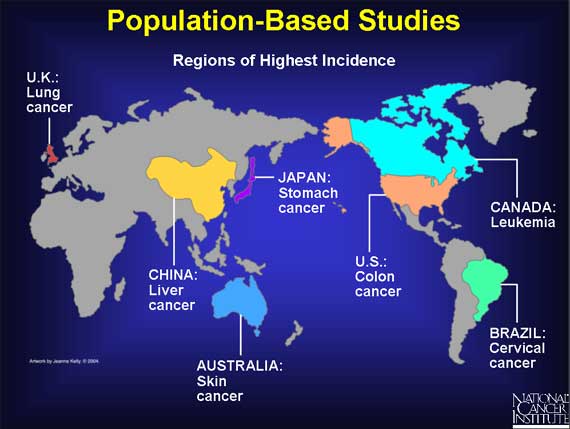|
One way of identifying the various causes of cancer is by studying populations and behaviors. This approach compares cancer rates among various groups of people exposed to different factors or exhibiting different behaviors. A striking finding to emerge from population studies is that cancers arise with different frequencies in different areas of the world. For example, stomach cancer is especially frequent in Japan, colon cancer is prominent in the United States, and skin cancer is common in Australia. What is the reason for the high rates of specific kinds of cancer in certain countries?

< Previous | Index | Next Slide > |